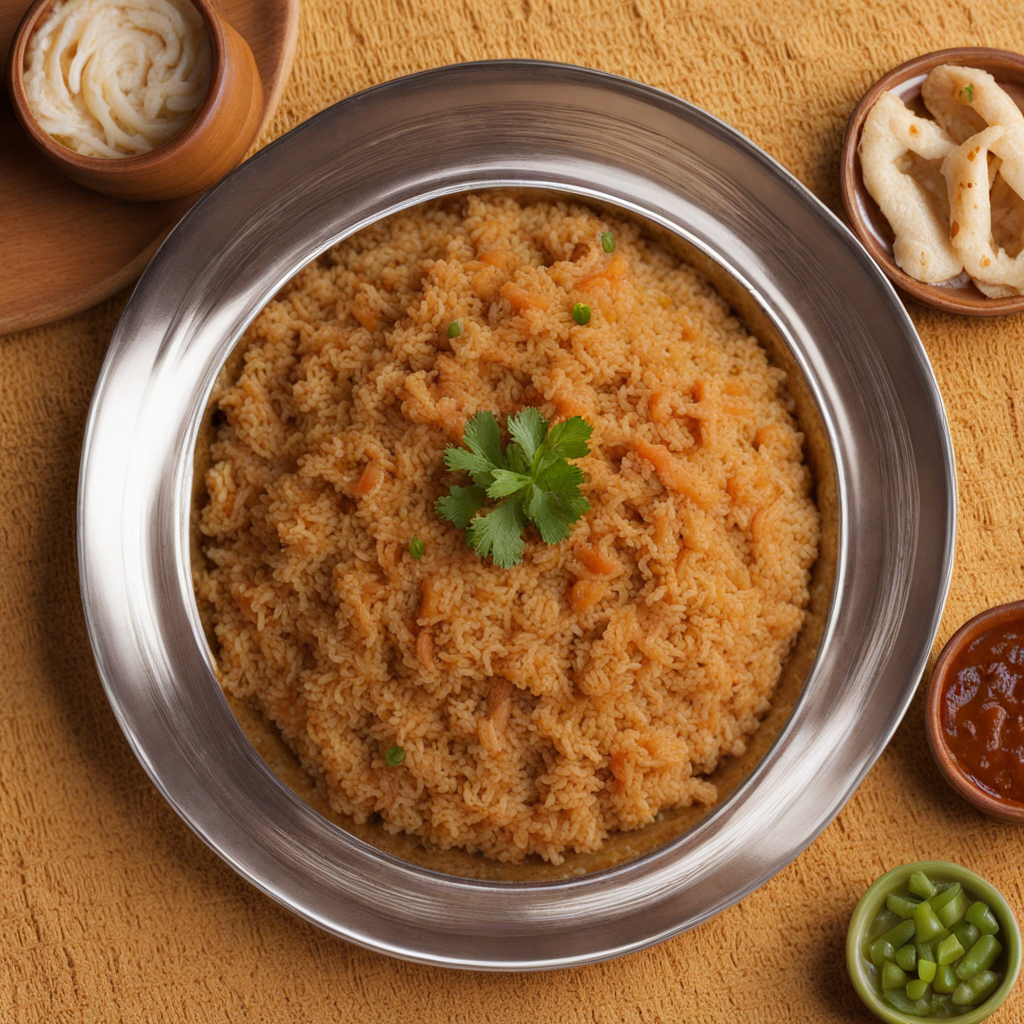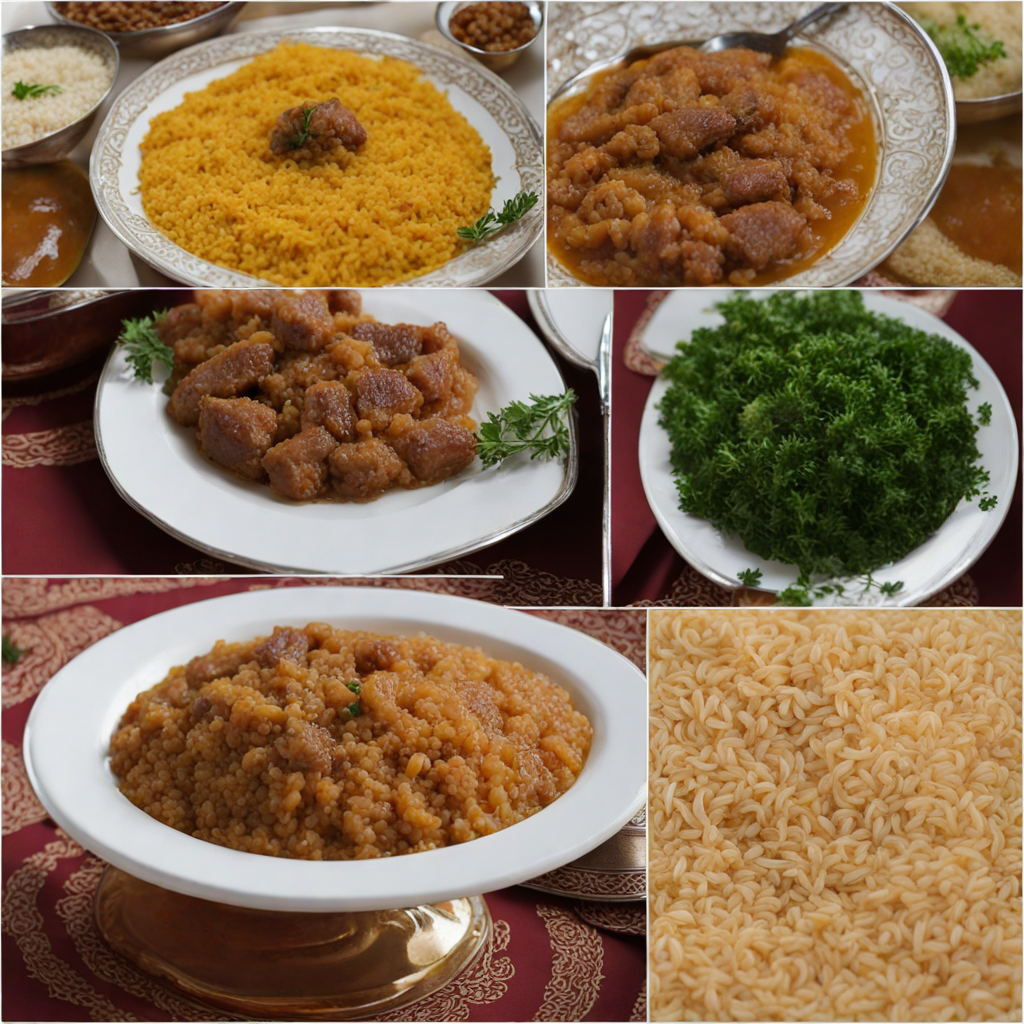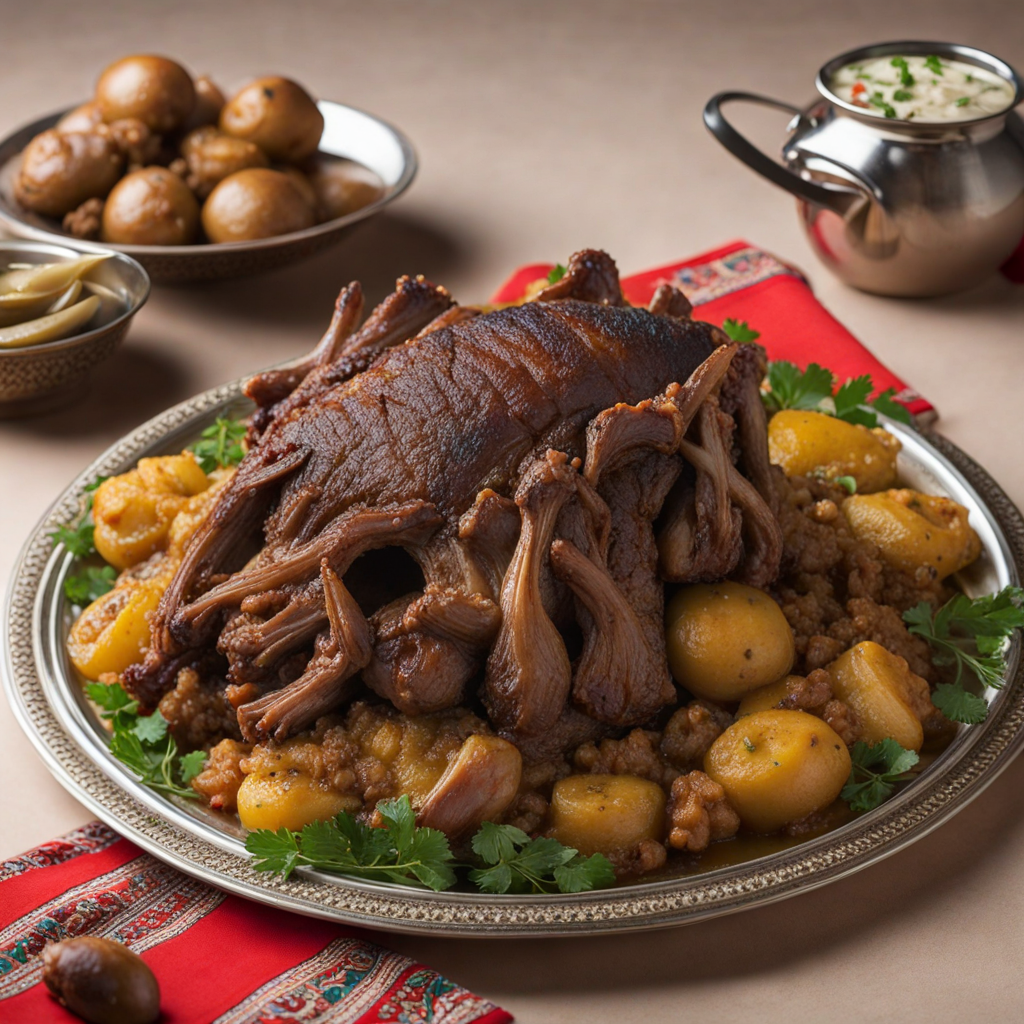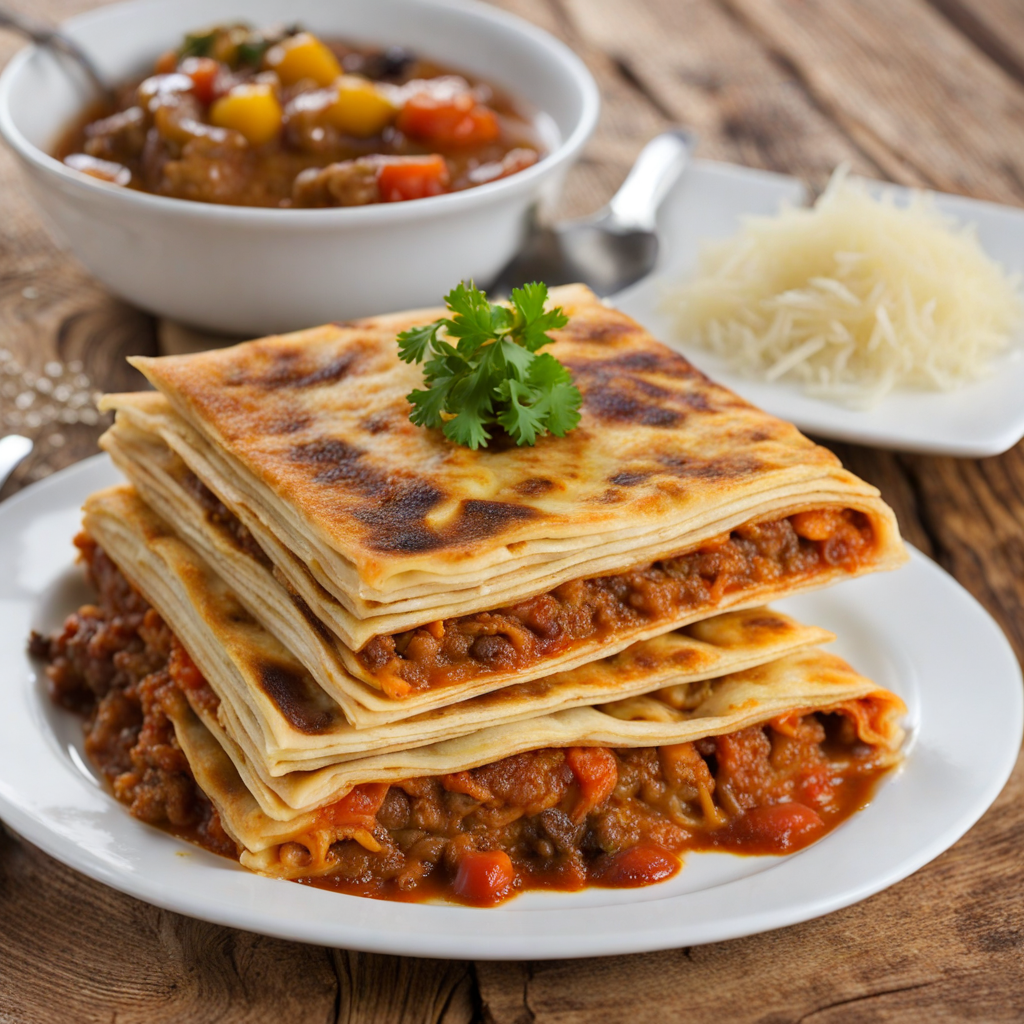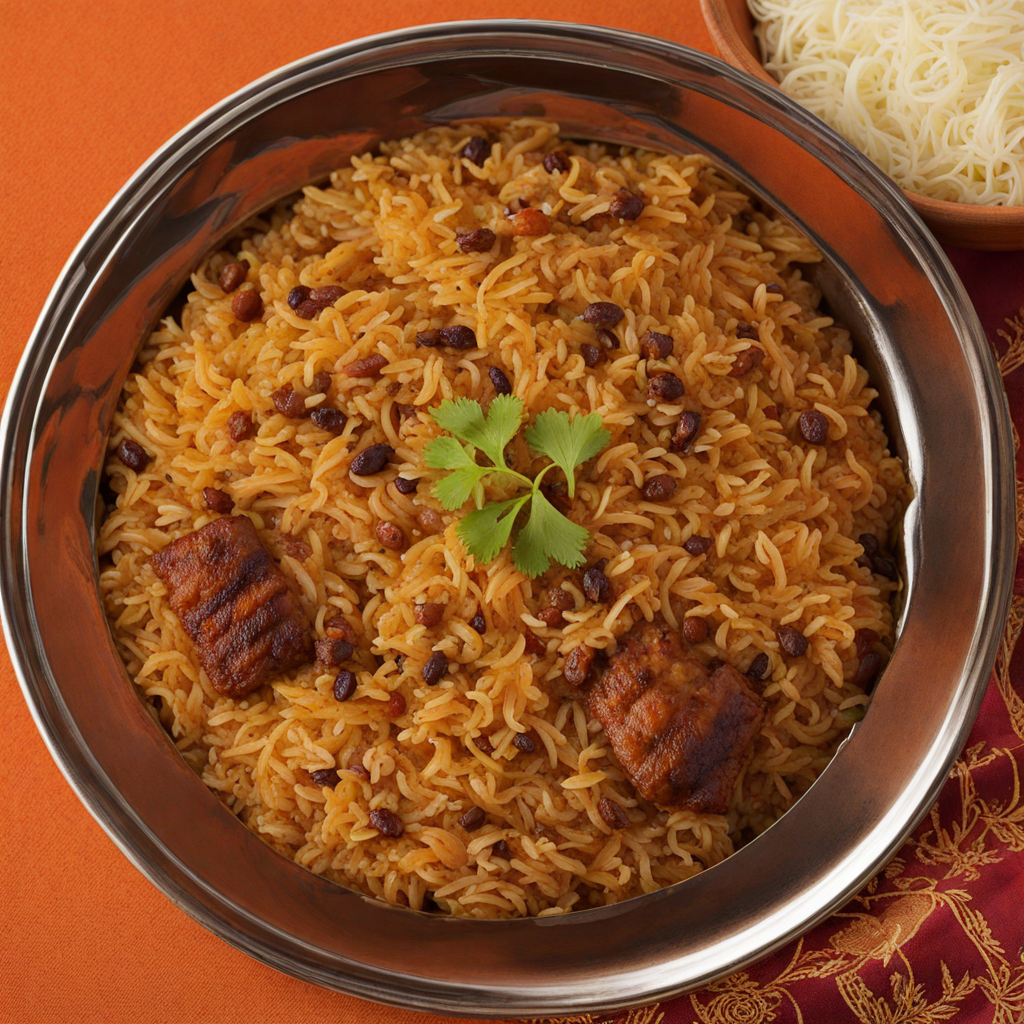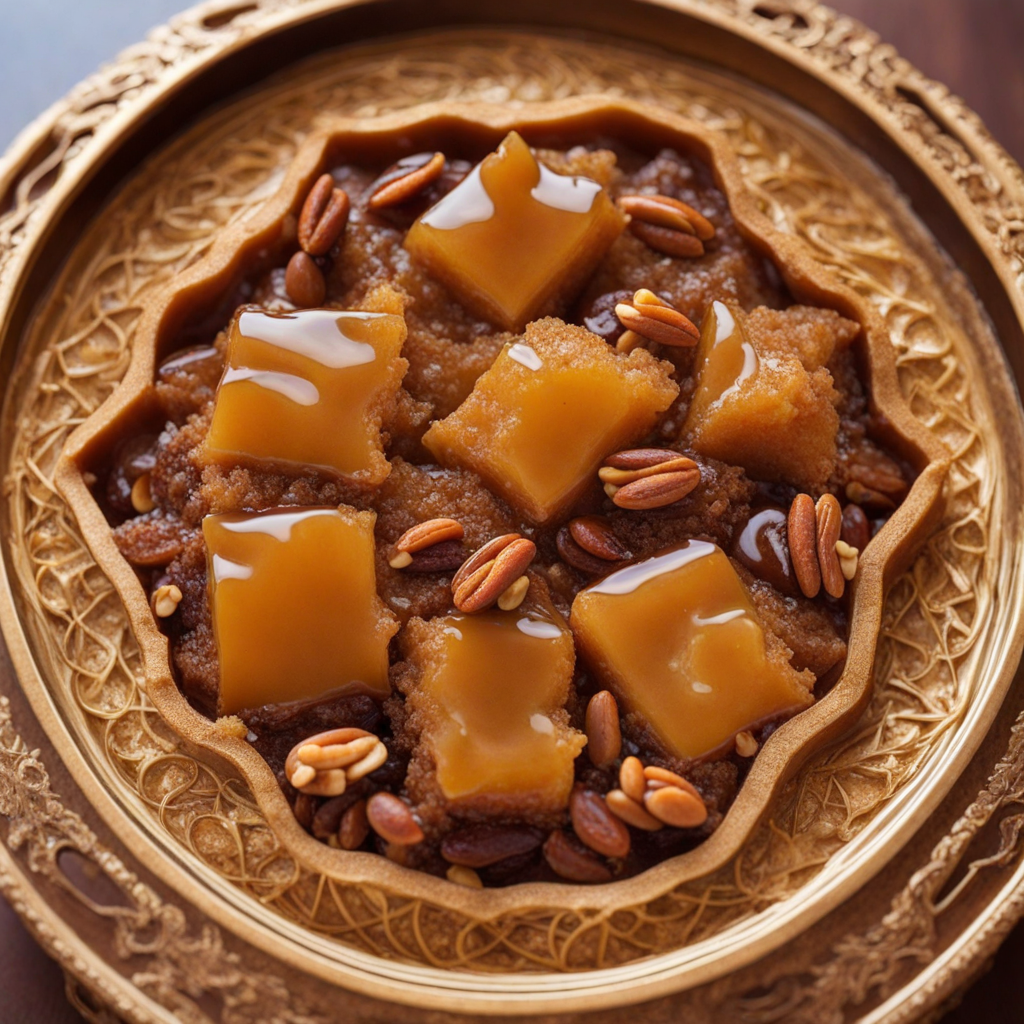Harees
Harees is a traditional Omani dish that embodies the essence of comfort food, showcasing a harmonious blend of flavors and textures. It is primarily made from wheat and meat, often chicken or lamb, which are slow-cooked together until the wheat breaks down and the ingredients meld into a creamy, porridge-like consistency. The cooking process can take several hours, allowing the flavors to develop deeply, resulting in a rich, hearty dish that is both filling and satisfying. The natural sweetness of the wheat complements the savory notes of the meat, creating a delightful balance that is loved by many. The dish is typically seasoned with a touch of salt and sometimes enhanced with spices like cinnamon or cardamom, which adds an aromatic dimension to its flavor profile. Harees is often served during special occasions and festivals, making it a dish associated with celebration and togetherness. It can be garnished with a drizzle of ghee or served alongside dates, which enhance its richness and provide a sweet contrast. The texture is smooth and creamy, making it easy to eat and perfect for sharing among family and friends. In Oman, Harees is not just food; it is a cultural experience that reflects the hospitality and warmth of Omani traditions. Each region may have its own variation, with slight differences in preparation and ingredients, making it a dish that invites exploration and discovery. Whether enjoyed as a comforting meal on a cool evening or as part of a festive gathering, Harees offers a unique taste of Omani culinary heritage that is both nourishing and soul-satisfying.
How It Became This Dish
The Rich History of هريس (Harees) in Oman Harees, a beloved dish in Oman, has a history as rich and textured as its creamy, grainy consistency. This traditional dish, made primarily from wheat and meat, is a culinary symbol of Omani culture, reflecting the country’s agricultural heritage, social customs, and communal spirit. To appreciate harees fully, we must explore its origins, cultural significance, and development over time. #### Origins of Harees The roots of harees can be traced back to ancient times, with evidence suggesting it has been consumed in various forms across the Arabian Peninsula for centuries. Wheat, one of the main ingredients in harees, has been cultivated in the region since the Neolithic period. The cultivation of grains was essential for the early inhabitants of the Arabian Peninsula, as it provided a stable food source that could sustain them through the harsh desert climate. Harees itself is believed to have been influenced by the dietary habits of nomadic tribes who traversed the region, requiring meals that were nutritious, easy to prepare, and capable of sustaining them during long journeys. The dish likely evolved as a result of these practical needs, eventually becoming more refined and integrated into the local culinary traditions. The earliest written records of harees can be found in Islamic texts from the 7th century, which highlight the dish’s popularity among early Muslim communities. As Islam spread throughout the Arabian Peninsula, so too did the culinary practices associated with it. Harees became particularly favored during the holy month of Ramadan, as it is both nourishing and easy to digest, making it ideal for breaking fast after a long day of fasting. #### Cultural Significance In Oman, harees holds a special place in the hearts of its people. It is not just food; it is a symbol of hospitality, community, and cultural identity. Traditionally, harees is served during festive occasions, weddings, and religious celebrations, signifying its role in bringing people together. The preparation of harees is often a communal activity, where families and friends gather to cook and share the dish, reinforcing social bonds and a sense of community. The dish is particularly significant during Ramadan, when it is commonly prepared to break the fast. Its rich, hearty nature provides the necessary sustenance after a day of abstaining from food and drink, making it a cherished part of the Iftar meal. The act of sharing harees during this holy month creates a sense of unity among families and communities, emphasizing the values of generosity and togetherness that are central to Islamic teachings. Harees is also associated with Omani identity, reflecting the country’s agricultural practices and reliance on locally sourced ingredients. It is a dish that speaks to the land and the people, showcasing the culinary practices that have been passed down through generations. As such, harees is more than just a meal; it is a marker of cultural heritage and pride. #### Development Over Time As Oman has evolved over the centuries, so too has the preparation and consumption of harees. The basic recipe for harees has remained consistent, with wheat and meat being the main components, but various regional variations and modern adaptations have emerged. Historically, the preparation of harees was labor-intensive. The process involved soaking wheat overnight, grinding it into a coarse flour, and then cooking it slowly with meat, often chicken or lamb, until it reached a creamy consistency. This slow-cooking method required patience and skill, with families often taking turns to stir the pot for hours, ensuring the dish was cooked to perfection. The traditional cooking method involved using a large clay pot called a "mahsouf," which was placed over an open flame, imparting a unique flavor to the dish. In contemporary times, the preparation of harees has been streamlined with modern kitchen appliances, such as pressure cookers and food processors, making it easier to prepare than in previous generations. However, many families still adhere to traditional methods, valuing the connection to their ancestors and the authenticity of the dish. Regional variations of harees have also emerged, influenced by local ingredients and culinary practices. In some areas, spices like cardamom and saffron are added to enhance the flavor, while others may incorporate different types of meat or even vegetarian versions. These adaptations reflect the dynamic nature of Omani cuisine and its ability to absorb influences while maintaining its core identity. Despite these changes, the essence of harees has remained intact. It continues to be a dish that embodies the spirit of Omani hospitality and tradition. Many families have their own secret recipes, passed down from generation to generation, each with its unique twist that adds to the tapestry of harees' history. #### Harees in Modern Oman In modern Oman, harees enjoys a place of prominence not only during festive occasions but also in everyday life. It has found its way onto restaurant menus, with chefs offering their interpretations of the classic dish, often with a contemporary twist. Events such as the Muscat Festival celebrate traditional Omani cuisine, featuring harees among other local dishes, allowing both locals and tourists to appreciate its cultural significance. Moreover, harees has transcended its humble origins to become a symbol of Omani pride on the international stage. As Oman has sought to promote its culinary heritage, harees has been featured in various food festivals and cultural exhibitions, showcasing the country’s rich gastronomic traditions to a global audience. In conclusion, harees is more than just a dish; it is a reflection of Omani history, culture, and community. From its ancient origins to its role in modern culinary practices, harees tells the story of the land and its people—a story of resilience, tradition, and unity. As Oman continues to embrace its culinary heritage, harees remains a cherished emblem of its rich cultural tapestry, ensuring that this beloved dish will be enjoyed by generations to come.
You may like
Discover local flavors from Oman


